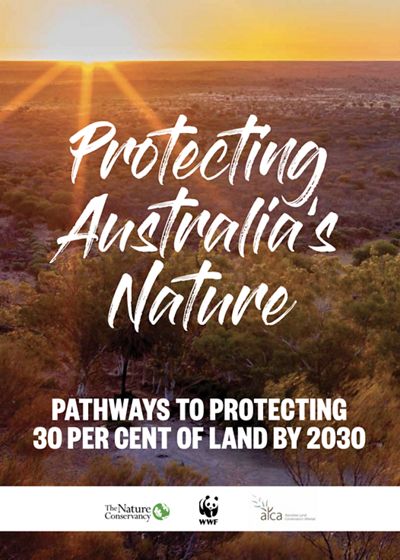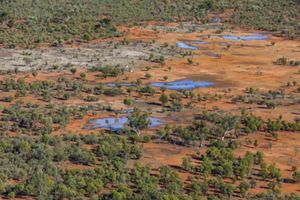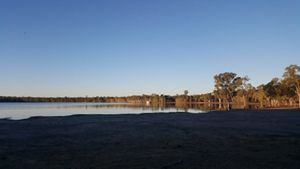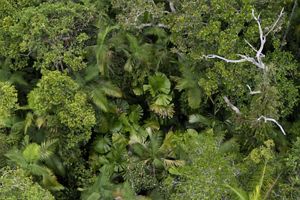TNC supports Australia’s commitment to 30x30: how to achieve our goal and set an example
Protecting landscapes and ecosystems: a priority
The world is facing the dual crises of climate change and biodiversity loss. On lands, freshwater and oceans, ecosystems are under increasing pressure, threatening the animals and plants that rely on them for habitat, and the communities whose livelihoods depend on nature and its benefits.
While nature is impacted by climate change, research shows that protecting it can also contribute to a third of the emission reductions needed by 2030 to keep global warming under 2°C.
Protecting landscapes and the ecosystems they support is essential, and urgent.
Australia has committed to 30x30
In 2022, the Australian Government, along with governments from other countries, committed to protect at least 30% of Australia’s land and oceans by 2030, a target known as ‘30x30’.
Australia already has built a serious foundation to reach this ambitious target.
Using a science-based approach and a combination of public, private and Indigenous protected areas, Australia has steadily increased its protected areas. 45% of our oceans have some form of protected areas, only a small proportion of this is highly protected.
Quote: Alison Rowe
Now is the time to not only commit to protecting our environment, but also to give ourselves the means to fulfill our ambitions and collectively invest in nature

30x30 is achievable: here’s how
In November 2023, TNC, Pew Charitable Trusts, the Australian Land Conservation Alliance (ALCA) and WWF-Australia released the ‘Pathways to 30x30’ report. Written by scientists and policy experts, the Pathways report provides a blueprint on how Australia can meet its commitment to 30x30.
The Pathways report gives four clear recommendations for the Australian Government in order to reach 30x30:
- Establish a new dedicated $5 billion fund for the purchase of land of high biodiversity importance to create new public, private or Indigenous protected areas.
- Rebuild government capacity and continue to support the creation of new Indigenous Protected Areas to meet Traditional Owner demand and aspirations and establish secure long-term funding for the management of Indigenous Protected Areas.
- Encourage permanent conservation covenants through:
- direct support to state and territory conservation covenant programs with an explicit focus on expanding the protection of areas in under-represented bioregions and ecosystems
- support for states and territories in developing enhanced protection conservation covenants in order to attract larger scale private conservation investment
- Treasury or Productivity Commission review into federal and state tax and financial incentives and barriers to private land conservation.
- Partner with states and territories to identify areas of high conservation significance and protected area opportunities.
To get to 30x30, the report recommends following three principles:
Recognises the rights and interest of First Nations peoples. For example, dedicated, financially-supported and leading First Nations roles in policy design, governance, implementation, and management of protected areas leads to better protection.
Continues to use existing science to prioritise new protected areas, as well as the principles of Comprehensive, Adequate and Representative protection.
Increases ecosystem representation across the National Reserve System through investment in public, private and Indigenous protected areas across all levels of government.
Quote: James Fitzsimons
Australia has been a leader in its science-based approach, and inclusiveness of protection efforts across public, private and Indigenous lands. This approach holds Australia in good stead to meet its 30x30 commitment, but increased investment is required.”
TNC Australia’s role in supporting Australia’s commitment to 30x30
The Nature Conservancy has a long history of assisting in the establishment of protected areas in Australia. This includes working with partners to purchase land from willing sellers for the creation of new public, private and Indigenous protected areas, as well as supporting Indigenous communities who want to establish new Indigenous Protected Areas on their Country.
We know that protected areas are one of the most effective means of conserving biodiversity.
Protecting 30 per cent of our land, freshwater and oceans by 2030 isn’t simply about protecting any 30 per cent, it’s about protecting the right areas – that’s why we rely on science to lead the way.
Advocating for evidence-based solutions in Australia and around the world, we focus on:
- Protecting areas most critical for biodiversity, including intact ecosystems, and emphasising ecological representativeness
- Ensuring conservation supports landscape connectivity to help nature adapt to climate change
- Supporting First Nations peoples in their efforts to manage Country.
Areas we 've recently helped to protect:

Comeroo
Preserving Comeroo this is an important milestone for conservation and biodiversity in NSW and in Australia.
Read more
Nilpena
Nilpena is 600 kilometres north of Adelaide in the rocky outback of South Australia. The vast 60,000-hectare property is home to some of the oldest fossils on Earth.
Read more
The Lakes
The former grazing property is on Gudjala country. It’s home to high-altitude lakes, rare gums and unique forests.
Read more
Cape York
The area located 620km north of Cairns is one of the most biodiverse in the world.
Read more